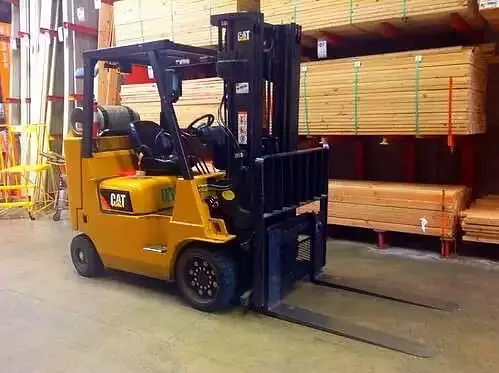 Leasing versus Purchasing.
Leasing versus Purchasing.
Forklifts are a vital component in many industries, including manufacturing, warehousing, and construction. They provide the ability to move large, heavy items quickly and efficiently, allowing businesses to increase productivity and reduce labor costs. However, forklifts are also a significant investment, and businesses need to carefully consider their options when it comes to financing them. In this document, we will explore the pros and cons of leasing versus purchasing a forklift and provide guidance to help businesses make the best decision for their needs.
Purchasing a Forklift
Purchasing a forklift outright is the most traditional and straightforward method of acquiring one. It involves paying the full purchase price upfront, either with cash or through financing. There are several advantages and disadvantages to this approach.
Advantages of Purchasing a Forklift:
Ownership: Purchasing a forklift means you own it outright, which gives you complete control over how you use it. You can customize it to your specific needs and use it as often or as little as you like.
Cost Savings: Purchasing a forklift outright can be less expensive in the long run than leasing. Once the forklift is paid off, you can continue to use it without any monthly payments.
Tax Benefits: When you purchase a forklift, you may be able to take advantage of tax benefits such as depreciation deductions, which can lower your overall tax liability.
Disadvantages of Purchasing a Forklift:
High Initial Cost: Purchasing a forklift outright requires a significant upfront investment, which can be a financial burden for small businesses or startups.
Maintenance Costs: As the owner of the forklift, you are responsible for all maintenance and repair costs. These expenses can add up over time, especially if the forklift requires significant repairs.
Obsolescence: Forklifts, like all equipment, can become obsolete over time. If you purchase a forklift and then a newer, more advanced model comes out, your forklift may lose value and become less useful.
Leasing a Forklift
Leasing a forklift is another popular option for businesses. Leasing involves paying a monthly fee to use the forklift for a predetermined period, usually three to five years. At the end of the lease term, the forklift is returned to the leasing company, and the business has the option to lease a new forklift or purchase the current one. There are several advantages and disadvantages to leasing a forklift.
Advantages of Leasing a Forklift:
Lower Initial Cost: Leasing a forklift requires a much lower initial investment than purchasing one outright. This can make it a more viable option for small businesses or startups with limited capital.
Predictable Expenses: With a lease, you know exactly how much you will be paying each month for the duration of the lease term. This can help businesses budget more effectively and avoid unexpected expenses.
Maintenance Included: Most forklift leases include maintenance and repair services as part of the agreement, which can reduce maintenance costs and downtime.
Disadvantages of Leasing a Forklift:
No Ownership: When you lease a forklift, you do not own it outright, and you must return it to the leasing company at the end of the lease term. This can be a disadvantage for businesses that plan to use the forklift for an extended period.
Higher Total Cost: Leasing a forklift may be more expensive in the long run than purchasing one outright. The total cost of a lease may be higher than the cost of purchasing a forklift and paying for maintenance and repairs over time.
Restrictions on Use: Leasing companies may impose restrictions on the use of the forklift, including limits on the number of hours it can be used per day, maintenance requirements, and other terms and conditions. These restrictions can limit the flexibility of the business in using the forklift in the way that best suits its needs.
“When you lease a forklift, you do not own it outright…..”
 Which Option is Best for Your Business?
Which Option is Best for Your Business?
The decision to lease or purchase a forklift depends on several factors, including the size and needs of your business, your budget, and the frequency and intensity of your forklift usage. Here are some guidelines to help you determine which option is best for your business:
Budget: If you have limited capital or need to conserve cash flow, leasing may be the better option as it requires a lower initial investment. However, if you have the funds available and are looking for a long-term asset, purchasing may be the better option.
Usage: If you plan to use the forklift intensively and require customizations, purchasing may be the better option as you will have complete control over the forklift. If you require a forklift for occasional or short-term use, leasing may be the better option as you can avoid maintenance and repair costs.
Tax Benefits: If you are interested in taking advantage of tax benefits, purchasing may be the better option as you can take advantage of depreciation deductions. However, if you are looking for a lower tax liability, leasing may be the better option as lease payments are often tax-deductible.
Flexibility: If you require flexibility in your use of the forklift, purchasing may be the better option as you will have complete control over the asset. However, if you are looking for a more predictable expense and do not need complete control, leasing may be the better option.
Conclusion
Purchasing and leasing are both viable options for financing a forklift, and each has its advantages and disadvantages. When making a decision, it is essential to consider the size and needs of your business, your budget, and the frequency and intensity of your forklift usage. With careful consideration, you can choose the option that is best for your business and enjoy the benefits of increased productivity and efficiency that a forklift provides.
